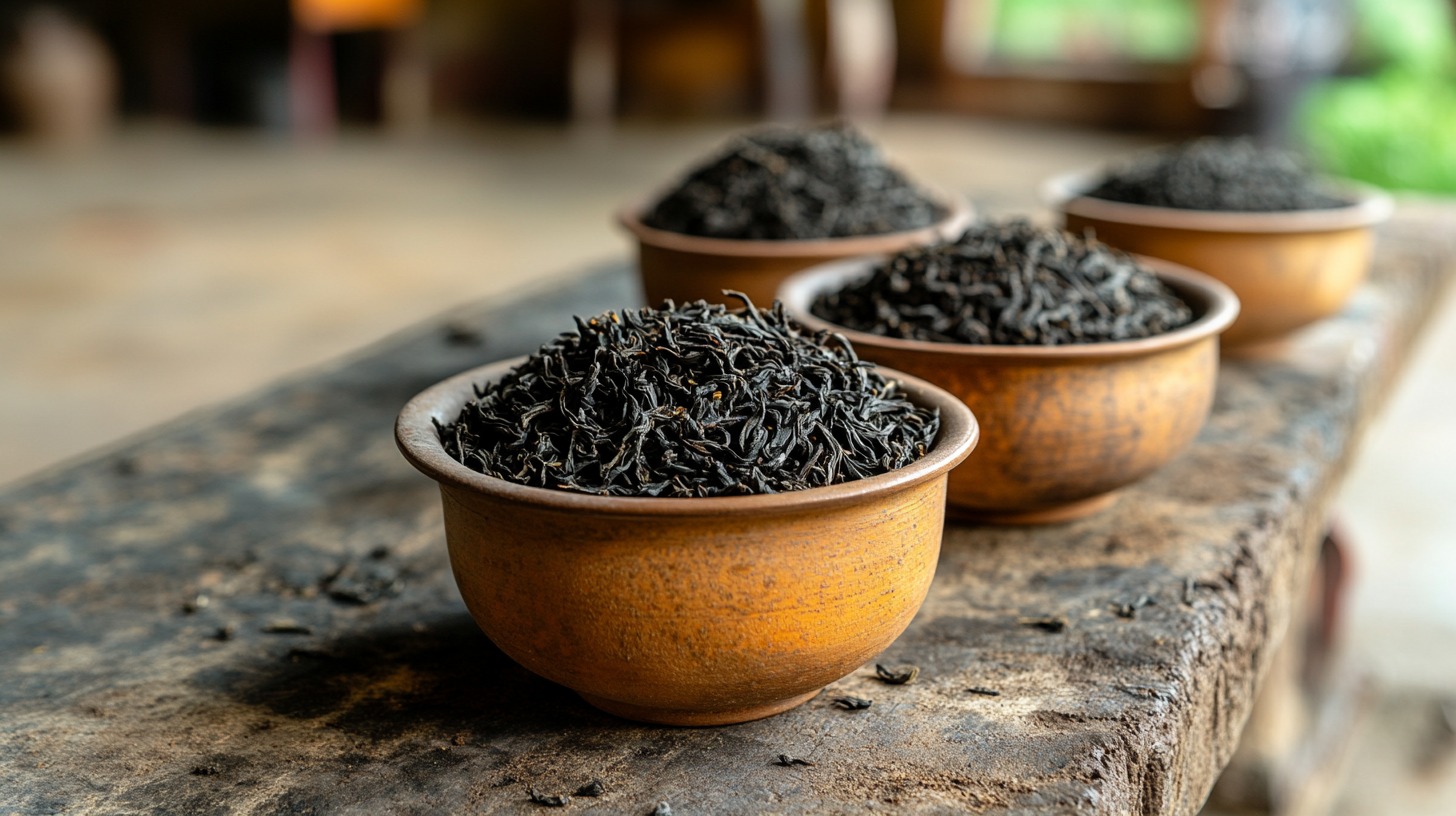Assam, a northeastern state of India, is famed for its tea plantations and vibrant greenery.
With the Himalayas, the Brahmaputra Plain, and the Deccan Plateau framing its terrain, Assam is not only a biodiversity hotspot but also the heart of India’s industry.
Producing over half of the nation’s total tea, Assam has a long and fascinating history rooted in discovery, colonial ventures, and indigenous traditions.
Now let us talk about everything you need to know about Assam tea.
Origin and History of Assam Tea

Before Assam entered the global tea stage, China dominated the production and trade. Its teas were sought after worldwide, leaving little room for competitors.
However, Assam’s lush and dense forests held a treasure yet to be recognized, one that would challenge China’s monopoly.
Discovery by Robert Bruce
In 1823, Scottish merchant Robert Bruce discovered tea being cultivated by the Singpho tribe during his travels in the region. This tribe had been using leaves as an herbal beverage for generations but had not commercialized it.
- While trading near Rangpur, Robert Bruce encountered the Singpho tribe and learned about their tea-making traditions.
- The tribe used tea leaves to brew an herbal drink, employing techniques refined through generations.
- Maniram Dewan, a visionary Assamese figure, introduced Bruce to plantations and facilitated a meeting with Singpho leader Bessa Gam.
The Colonial Impact and Development of Assam Tea
The history of Assam tea intertwines deeply with British colonialism.
- Maniram Dewan later became the first Indian to establish independent tea estates but was executed in 1858 for his involvement in the 1857 rebellion.
- Charles Bruce, Robert’s brother, transported Assam tea seeds to the Calcutta Botanical Garden in the early 1830s.
- By the mid-1830s, the East India Company initiated large-scale cultivation in Assam, creating the foundation for systematic tea production.
The Growth of Assam’s Industry

The Assam industry experienced a significant breakthrough with the establishment of the Assam Tea Company in 1839.
The milestone initiated organized cultivation and commercialization in the region, laying the foundation for its economic significance.
By the 1860s, over 160 estates were thriving, driving steady economic growth and positioning Assam as a major player in global production.
Milestones in the Industry’s Growth
- Assam boasts more than 800 organized plantations, alongside over 100,000 small-scale cooperatives and privately owned tea estates.
- The region produces approximately 600 million tonnes annually, ranking it among the world’s largest producing areas.
- The industry serves as a crucial source of income and employment for Assam, sustaining a large portion of its population.
- Assam’s bold flavor and strong character have secured its standing in both domestic and international markets.
Role of the Tocklai Tea Research Institute
The Tocklai Tea Research Institute in Jorhat has played a pivotal role in advancing the industry.
- Innovations aimed at improving yield and quality standards.
- Promoting eco-friendly methods that balance productivity with environmental preservation.
- Research that keeps Assam tea aligned with evolving market demands.
Historical Evolution in Tea Manufacturing
During the initial phase of tea manufacturing in Assam, workers used simple, traditional methods. They carefully hand-picked the leaves, dried them under natural conditions and processed them without any chemical intervention. Farmers used manual techniques to prepare it, ensuring its authenticity and preserving its natural flavor.
The process was labor-intensive but highly effective in maintaining the organic quality of the product.
During this period, it was more of a cultural and medicinal product than a large-scale commercial commodity. Indigenous communities like the Singpho tribe prepared tea using leaves plucked from wild bushes, adhering to ancestral methods that prioritized natural cultivation.
These practices laid the foundation for Assam’s later emergence as a global hub.
Shift to Mechanization and Chemical Use
As the industry expanded during the 20th century, Assam witnessed a significant transformation in its production methods. Mechanization became the norm, with machines being introduced to increase efficiency and meet rising global demand.
| Aspect | Details |
|---|---|
| Chemical Dependency | Fertilizers and pesticides were introduced in the 1970s and 1980s to improve yields and protect crops from pests and diseases. |
| Focus on Output | The industry’s priority shifted toward maximizing profit and quantity over traditional quality and organic practices. |
Return to Organic Cultivation

The over-reliance on chemicals prompted a reevaluation of production practices in Assam. Starting around 2008, it estates began transitioning back to organic and sustainable farming methods.
Transition Period
Between 2008 and 2010, a growing awareness of the health and environmental impacts of chemical farming led producers to reduce synthetic inputs. Organic farming practices gained traction, promoting the use of natural fertilizers and pesticides.
Benefits
Healthier tea products appealed to conscious consumers, and sustainable practices helped preserve Assam’s ecological balance. Farmers found renewed purpose in traditional methods, blending them with modern techniques for optimal results.
Diversification in Processing Methods

Over time, Assam’s tea manufacturing diversified, adopting distinct processing techniques to cater to various consumer preferences.
CTC (Crush, Tear, Curl)
Introduced to streamline production, this method involves processing leaves into small, uniform pellets. The robust and brisk flavor of CTC makes it ideal for mass-market tea blends and strong brews.
Orthodox Tea
The traditional processing technique involves rolling tea leaves to preserve their shape and complex flavor profiles. Orthodox is favored for its nuanced taste and higher quality, appealing to specialty markets. Both methods coexist in Assam, allowing producers to balance high-volume output with premium-quality offerings.
The Bottom Line
The Assam industry is a tale of resilience and adaptation. Its vibrant history, marked by indigenous practices, colonial endeavors, and modern advancements, underscores its significance on the global stage.
Assam tea remains a symbol of craftsmanship and heritage, offering a flavor that resonates worldwide while continuing to support communities and traditions.




